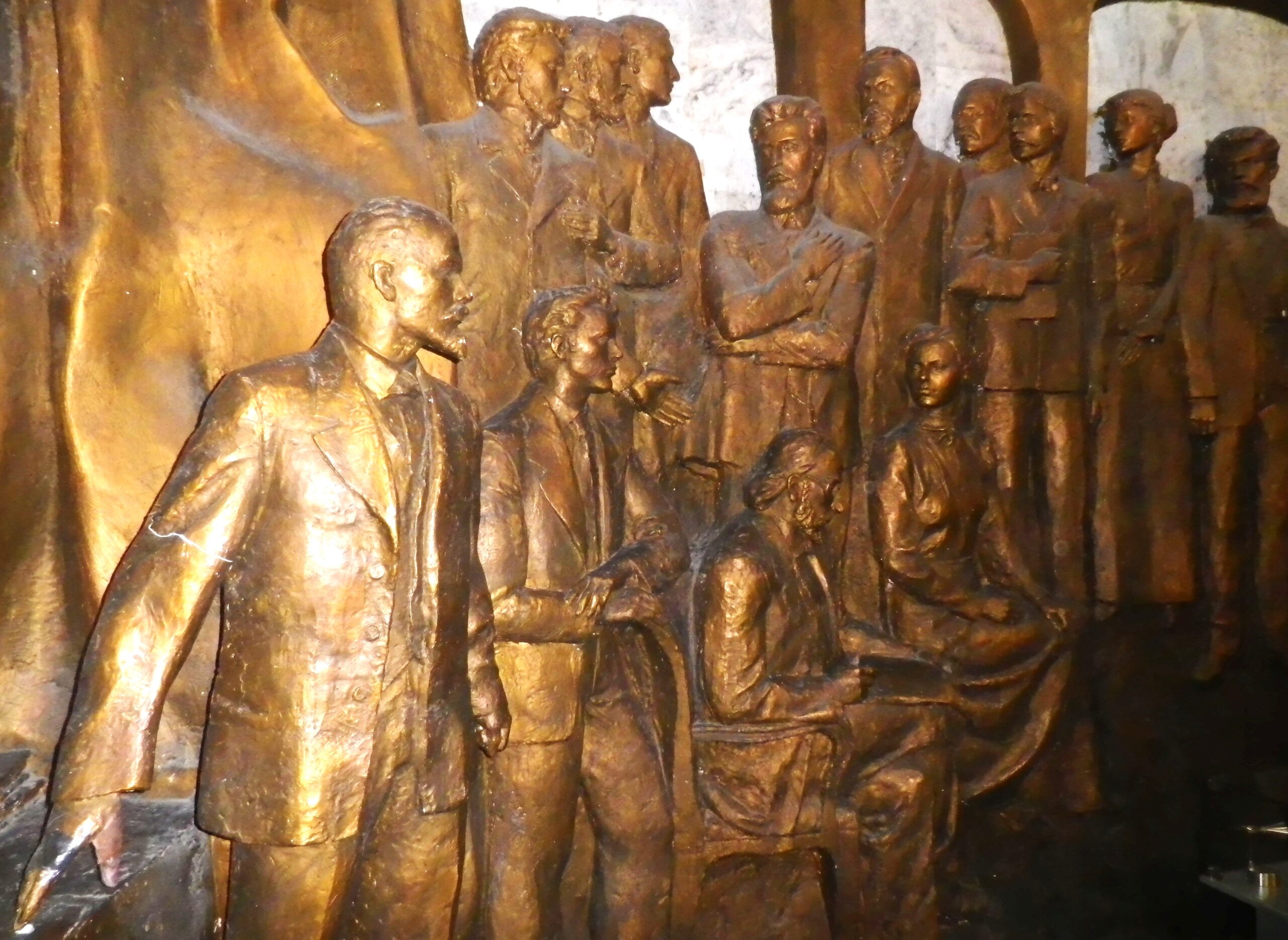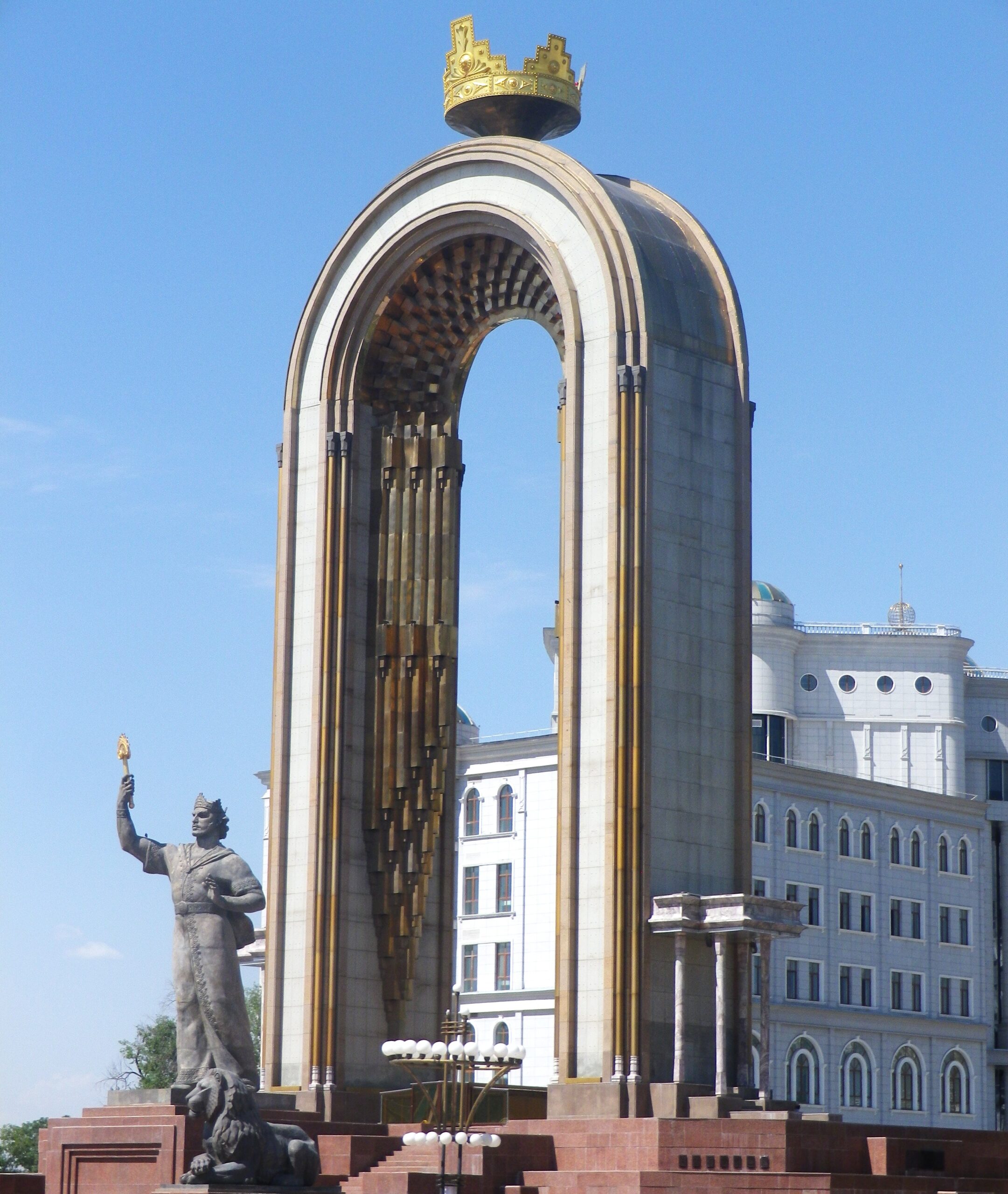
The recent removal of a towering 23-meter-tall monument to Vladimir Lenin in Osh, Kyrgyzstan, has ignited heated debate both domestically and abroad. While many are surprised the monument remained in place for more than three decades after the fall of the Soviet Union, its dismantling is part of a broader regional trend of de-Sovietization, a complex process involving the renaming of cities, removal of Soviet-era symbols, and the reassertion of national identity across Central Asia.
A Symbol Removed, A Debate Ignited

Lenin Monument in Osh, October 2024; image: TCA, Jonathan Campion
On June 7, Osh authorities dismantled what was once the tallest Lenin statue in Central Asia. Originally installed in 1975, the monument is to be relocated to a city park, according to the local government. Officials stressed the move was intended to improve the city’s architectural landscape, not to make a political statement, and have warned against “politicizing” the issue.
Despite official reassurances, the move has sparked sharp reactions on social media and in the press, with Russian media outlets characterizing the relocation as an anti-Russian gesture. Generational divides have become apparent: younger residents tend to support the removal, while older citizens have expressed dismay over what they see as the erasure of history.
“It’s a shame. It was more than a monument, it was part of our lives,” Elena, a local schoolteacher told The Times of Central Asia. “We joke that Lenin crossed the ‘red line’ and got demolished.”
Irina Bayramukova, a 68-year-old public figure, called the decision a mistake.
“The Lenin monument by Nikolai Tomsky was not only artistically significant, it represented an era. Removing it is like declaring war on those who identify with that past,” she told TCA.
Kyrgyzstan, like other Central Asian republics, has been distancing itself from its Soviet legacy since gaining independence in 1991. One of the earliest symbolic moves was the renaming of the capital, once called Frunze after a Bolshevik military leader, back to Bishkek, a modified version of its pre-Soviet name.
A Museum to Mikhail Frunze still stands in Bishkek, where the thatched-roof hut of his boyhood was purportedly transported brick by brick. A supporter of Stalin’s rival Zinoviev, when forced to undergo routine surgery by Uncle Joe in 1925, Frunze “mysteriously” died of chloroform anesthetic poisoning.
Redefining History

Lenin Monument in Bishkek; image: TCA, Stephen M. Bland
Originally erected in 1984 in the Central Square of Bishkek, a Lenin statue was relocated behind the State Historical Museum in 2003. As previously reported by TCA, earlier this year a debate on removing the monument altogether flared up.
In 2022, the National Historical Museum of the Kyrgyz Republic in Bishkek finally reopened its doors after being closed in 2016 for renovations which were planned to take less than a year but ended up taking six years. Several government officials were charged with misappropriating funds designated for the renovations, with former Prime Minister Sapar Isakov sentenced to 18 years in prison. Reportedly, over 307 million Som ($3.8 million) were stolen from the project.
The reopened museum, however, has seen most of the Soviet-era displays removed, including the section dedicated to the history of the Bolshevik Revolution, and statues of Lenin and Marx. The murals on the roof, which included an image of an American skeleton wearing a cowboy hat while riding a nuclear bomb are also gone, with the museum now focusing on Kyrgyz traditional pre-Soviet culture.

Bishkek National Historical Museum, 2015 – Lenin with arm glued and fingers masking taped back on; image: TCA, Stephen M. Bland
Parallels and Precedents
Supporters of the relocation of the Lenin statue in Osh point to similar developments within Russia itself, where numerous monuments to Soviet leaders have been removed from public squares and relocated to parks or peripheral areas. Major Russian cities have also shed their Soviet names, with Leningrad reverting to St. Petersburg, Sverdlovsk to Yekaterinburg, Gorky to Nizhny Novgorod, and Kuibyshev to Samara.
Kazakhstan was among the first in the region to systematically relocate Soviet monuments to designated parks and squares. Cities like Almaty, Astana, and Atyrau host clusters of statues depicting Lenin, Kirov, Kalinin, and Maxim Gorky, often near playgrounds and amusement areas. While the statues may appear somber and out of place, they have become fixtures for public interaction and informal education.
Kazakhstan has also been a frontrunner in renaming cities. Since the 1990s, dozens of towns have reverted to their pre-Soviet or Kazakh names: Shevchenko became Aktau, Guryev became Atyrau, and Semipalatinsk became Semey. Even the Ural River is now often referred to as the Zhayik within Kazakhstan’s borders.
The country’s capital, meanwhile, has changed its name six times, earning it a spot in the Guinness Book of Records. From Akmolinsk to Tselinograd, Akmola, Astana, Nur-Sultan, and back again to Astana, the city’s evolving identity mirrors Kazakhstan’s shifting national narrative.
Proposals to rename cities such as Petropavlovsk and Pavlodar have provoked strong public debate, underscoring the tensions that can accompany such symbolic changes.
Remembering History or Rewriting It?
Uzbekistan has seen its own controversies over the treatment of Soviet-era monuments. Russian media outlets have been particularly vocal in criticizing the demolition of monuments honoring World War II heroes. Nevertheless, President Shavkat Mirziyoyev has overseen the restoration of several key memorials, including those commemorating Sabir Rakhimov, a Soviet war hero, and the Shammahmudov family, known for sheltering evacuated children during the war.
One reason cities in Uzbekistan have retained their historical names is their antiquity. Cities such as Tashkent, Samarkand, Bukhara, Khiva, and Kokand, many of which are over 1,500 years old, were left with their original monikers, even by the Soviets.
Tajikistan, meanwhile, has taken a more definitive approach. The last major Lenin monument was removed in 2016 in the south of the country. In the capital, Dushanbe, Lenin’s statue was replaced in 1999 by one of Ismail Samani, the 10th-century founder of the first Tajik state.

The Samani Monument in Dushanbe, Tajikistan, replaced a statue of Lenin in 1999; image: TCA, Stephen M. Bland
Several city names have changed since independence. Kalininabad became Sarband and then Levakand, whilst Chkalovsk was renamed Buston in 2016. Perhaps most notably, Leninabad reverted to its ancient name, Khujand, a city believed by some historians to be the site of Alexandria Eschata, founded by Alexander the Great.
In Turkmenistan, a Lenin monument in Ashgabat once stood atop a pedestal styled after traditional Turkmen carpets. Though it remained in place until relatively recently, it too has since been removed.
The “Breadwinner”
Soviet sculptors once called Lenin the “breadwinner,” because designing such monuments was well paid, though only those deemed the most “worthy” – members of the Union of Artists who had won state awards – were commissioned. There are approximately 7,000 Lenin statues still standing globally, compared to 15,000 in 1991. At the dawn of its independence in 1991, Ukraine was home to 5,500. Three-hundred and fifty are said to remain, largely in occupied Crimea, Donetsk, Luhansk, and the Chornobyl Exclusion Zone.

Lenin monument in Chornobyl; image: TCA, Stephen M. Bland
As of 2021, 341 Lenin statues had been demolished in Kazakhstan since independence. It is unknown how many still stand in Central Asia.
What Comes Next?
The dismantling of Soviet monuments and renaming of cities across Central Asia reflects a broader effort to redefine national identities in the post-Soviet era. While many view these changes as long overdue, others see them as cultural erasure or politically charged acts that risk alienating segments of society.
Whether these efforts lead to cultural rejuvenation or social division remains to be seen. What is clear is that the legacy of the Soviet Union continues to cast a long shadow, and in Central Asia, history is not easily consigned to the past.
